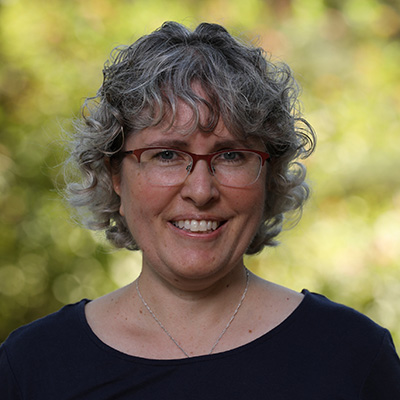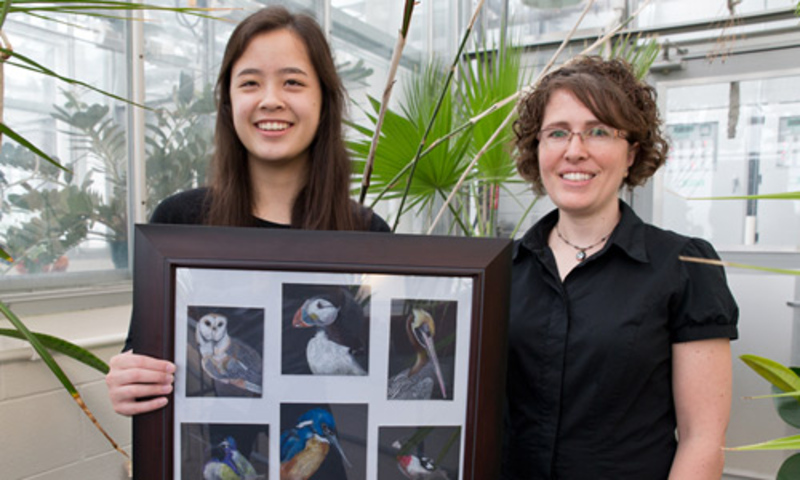The favorite part of my job is teaching, whether as a mentor, academic advisor, research advisor, or course instructor. I enjoy the constant flow of students in and out of my office or lab as they stop by for advice on a range of issues, both academic and personal. Consistent with this, I am eager to participate in activities that afford me the opportunity for extensive interactions with students (e.g., maintaining a team of research assistants, leading multiple Advising Circles, serving as a Posse Mentor). In addition, I volunteer for committees that are most related to students’ lives (e.g. Campus Affairs Council, the Committee on Residential Life, and the Student Enrollment and Retention Committee) and engage in large-scale efforts on their behalf (e.g., organizing the Denison-Columbus Alliance). I consistently make a big effort to engage students from diverse backgrounds, and I am proudly trained in Safe Zone.
I frequently ask students in my classes to apply knowledge and skills in ways that might benefit the campus community and beyond. For example, I regularly incorporate service and/or experiential learning projects into my upper-level courses, and I recruit students to join me in STEM outreach in Licking County. In fact, I am deeply engaged in a lot of service work, both on and off campus. For example, I represent the Division of Natural Sciences on the Departmental Report Review Committee at Denison, I serve as a mentor for a robotics team sponsored by The Works, and I participate as a board member for local non-profits (currently, the Weathervane Playhouse, and formerly, the Granville Education Foundation for which I served as President). My “service” has become increasingly intertwined with my teaching and research, and takes advantage of my quiet but focused, organized, and positive approach to getting things accomplished. I hope that my efforts, besides serving to inspire and educate, also fosters unlimited compassion for others, in keeping with the mission of Denison.
Learning & Teaching
Multicellular Life (BIOL 220)
Developmental Biology (BIOL 324)
Invertebrate Zoology (BIOL 336)
Directed Study (BIOL 361, 362)
Senior Research (BIOL 451, 452)
Associate Professor
Department of Biology, Denison University
2010 - present
Assistant Professor
Department of Biology, Denison University
2003-2010
Postdoctoral Research Associate
Department of Biology, Duke University
2000-2003
Research
The discipline of developmental biology focuses on how the genetic material regulates the transition of a fertilized egg into an adult. Like many developmental biologists, I seek to understand the functional consequence of changes in genes and/or their transcriptional regulation (i.e., how they are turned ON and OFF). Such changes can alter the phenotypic outcome of embryogenesis, explaining how differences arise in the course of evolution. For many years, I have used a marine invertebrate, the sea urchin, as a model system to study genes that regulate formation of the larval skeleton, including two genes that are also associated with metastasis in humans. I have published several papers, with later work funded by my grant from the NIH. More recently, I have been performing experiments to explore the impact of environmental change on embryogenesis. I am comparing multiple species to determine if some are more vulnerable than others to variation in factors such as temperature, salinity, turbidity, and pH. Ongoing work with sea urchins as well as freshwater snails (including those in Ebaugh Pond!) suggests that some species are indeed more vulnerable, but for reasons that are not yet clear. In the future, I plan to perform transcriptome profiling to determine how environmental change impacts embryogenesis at a molecular level. Thus, my research is quite interdisciplinary, combining elements of ecology, evolutionary biology, and developmental biology!
Talented undergraduate students with diverse backgrounds and interests contribute to my research program, often accompanying me to professional conferences held throughout the US. Those who have worked in my laboratory include: Cameron Ziegenfus (’24), Serina Dweh (’23), Katherine Ji (’22), Ariana Debevec (’22), Trang Nguyen (’22), Megan Wong (’21), Courtney Broady (’19), Moe Madar (’19), Mikayla Sharp (’18), Na’il Scoggins (’17), Kate Benson (’16), Wendy Geslewitz (’16), Andrew Groff (’16), Andrew Palmquist (’14), Maddie Paule (’14), Michelle Clark ('13), Efua Thompson ('13), Kayla Ako-Asare ('12), Emily Miller ('12), Saira Tekelenburg ('12), Donyea Moore ('11), Kelsey Wehrenberg ('10), Cecilia Murch ('09), Sadie Orlowski ('09), Carolyn Simpson (’09), Ashley Dunkle ('08), Katie Merva ('08), Kyle Thaman ('08), Elaine Binkley ('07), Jenna Walters ('07), Laura Cannon ('05), Nik Kiehl ('05), and Megan Neff (’05). They have been supported by the Anderson Endowment, the Bowen Endowment, the Laura C. Harris Fund, the Howard Hughes Medical Institute, the Office of Provost, and a grant from the NIH.
Works
Peer-Reviewed Publications
- Clark, M.*, Thompson, E.*, and Romano, L. (2019) A novel approach to deliver morpholino oligonucleotides into sea urchin eggs using a reagent that induces endocytosis, EndoPorter. Academic Leadership Journal in Student Research. Manuscript in revision.
- Romano, L., Byrum, C., Lee, P-Y., Morris, B. (2019) Echinoderms: Experimental Approaches. Chapter 19: Exploring the sea urchin genome with undergraduates using bioinformatic tools. Methods in Cell Biology. 150, pp. 449-469.
- Erkenbrack, E., Ako-Asare, K., Miller, E., Tekelenburg, S., Jeffrey Thompson, and Romano, L. (2016) Ancestral state reconstruction by comparative analysis of a GRN kernel operating in echinoderms. Development, Genes, and Evolution. 226, 37-45.
- Romano, L. Discussing the Human Life Cycle with Senior Citizens as a Service-Learning Project in an Undergraduate Developmental Biology Course. (2014) Science Education and Civic Engagement. 6(2), 26-29.
- Walters, J.L., Binkley, E.M., Haygood, R. and Romano, L.A. (2008) Evolutionary analysis of the cis-regulatory region of SM50 in strongylocentrotid sea urchins. Developmental Biology 315, 567-578.
- Romano, L.A. and Wray, G.A. (2006) Endo16 is required for gastrulation in the sea urchin Lytechinus variegatus. Development Growth and Differentiation 48, 487 – 497.
- Romano, L.A., and Wray, G.A. (2003) Conservation of endo16 expression in sea urchins despite evolutionary divergence in both cis and trans-acting components of transcriptional regulation. Development 130, 4187 – 4199.
- Wray, G.A., Hahn, M., Abouheif, E., Balhoff, J., Pizer, M., Rockman, M.V., and Romano, L.A. (2003) Evolution of eukaryotic transcription. Molecular Biology and Evolution 20, 1377 – 1419.
- Romano, L.A., and Runyan, R.B. (2000) Slug is an essential target of TGFβ2 signaling in the developing chicken heart. Developmental Biology 223, 91 – 102.
- Romano, L.A., and Runyan, R.B. (1999) Slug is a mediator of epithelial-mesenchymal cell transformation in the developing chicken heart. Developmental Biology. 212, 243 – 254.
- Runyan, R.B., Wendler, C.C., Romano, L.A., Boyer, A.S., Dagle, J.M., and Weeks, D.L. (1999) Utilization of antisense oligodeoxynucleotides with embryonic tissues in culture. Methods, 18(3), 316 – 321.


